My recent visit to Cappadocia, Turkey.
Kapadokya’ya – Hoşgeldiniz!
Welcome to Cappadocia. Here, right in the centre of Turkey, you will experience the amazing wonderland of caves in valleys, fairy chimneys and more. Cappadocia is one of those rare places that should be on your ‘Bucket List’ of places to see. I’d be shocked to learn if it wasn’t on yours! Here, you will experience soaring rock formations, uniquely-rippled landscapes, interesting walking trails, fascinating underground cities and rock-cut churches revealing untouched paintings on the walls and ceilings. For this reason, and not forgetting the Hot Air Balloon rides at dawn, Cappadocia is the must-see destination in Turkey.
Undoubtedly, the best way of viewing the lunar landscape of Cappadocia is by taking a hot air balloon ride, where by gliding gently you will see the breath-taking views, though you’ll have to be up bright and early for this amazing experience as preparation starts just before the sun rises. Alternatively, you could saddle up and travel like the first European explorers and the Scythian nomads on horseback through the many trails and valleys, or even explore it all on foot with one of the many guided hiking tours or daily tours (group or private) to see the recommended highlights of the region.
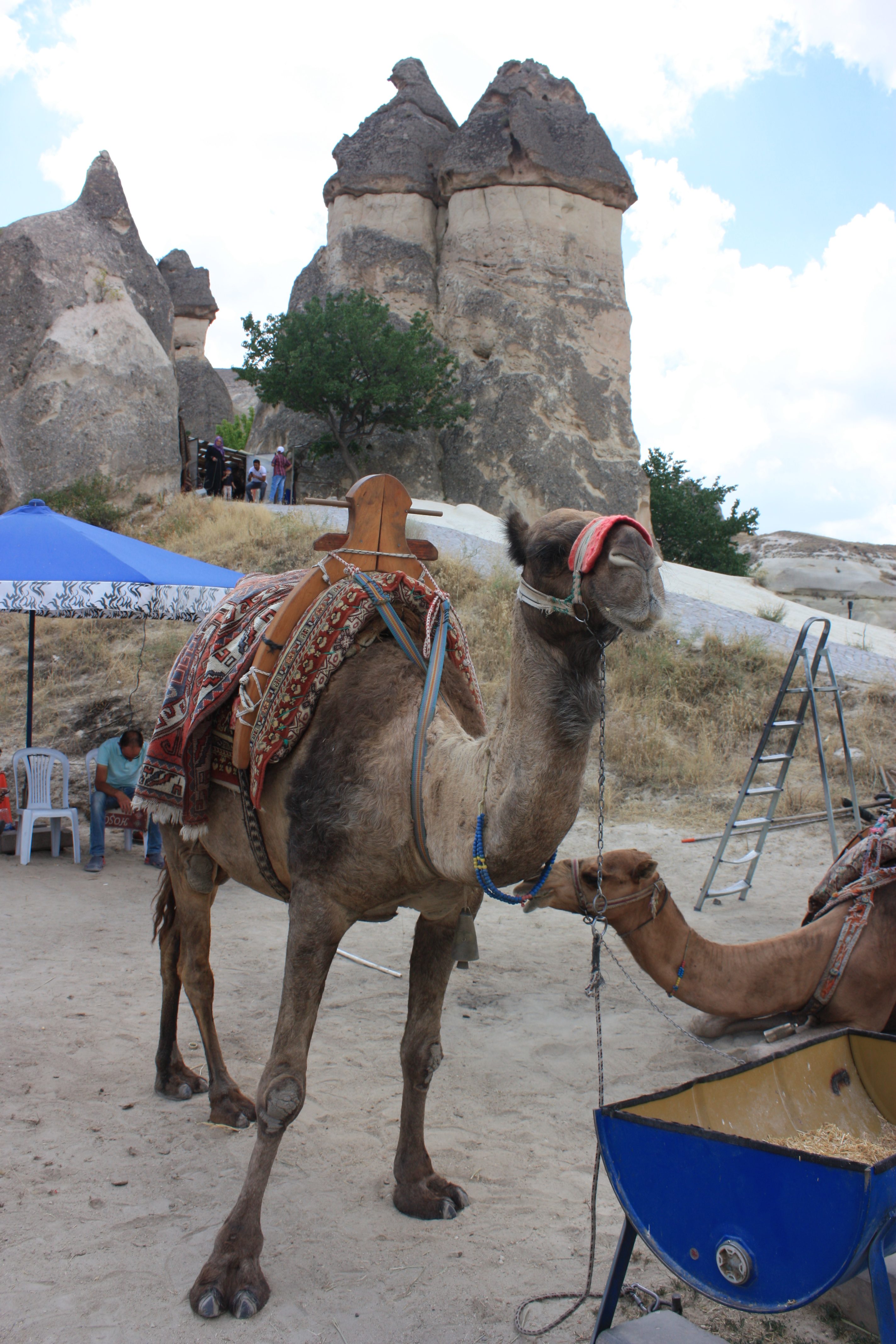

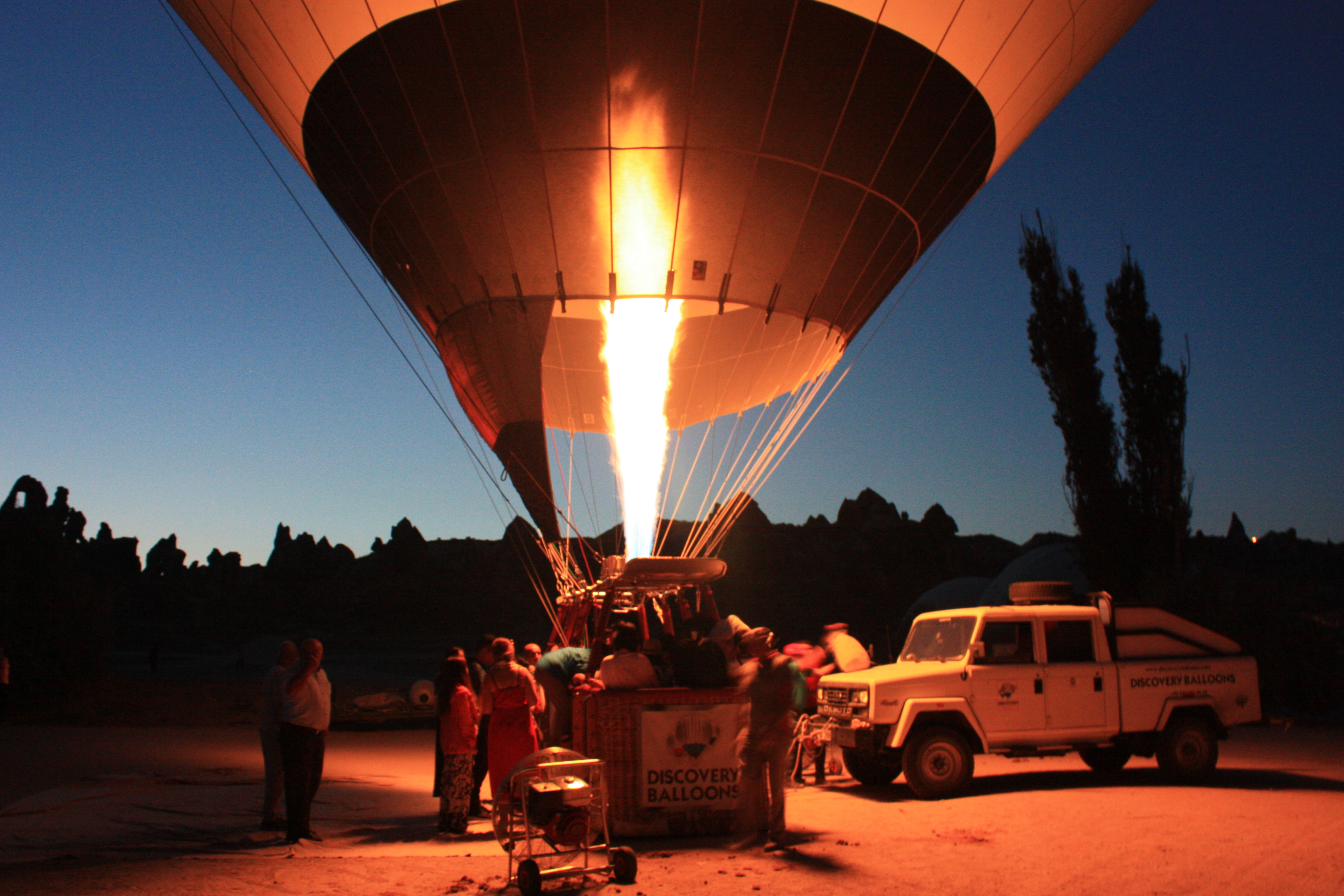
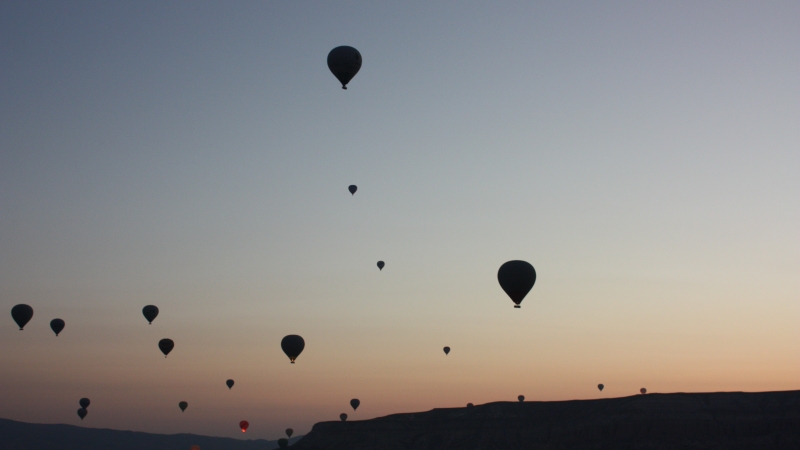
Where is Cappadocia?
Millions of years ago a group of ancient volcanos, names of which are: Mount Erciyes, Mount Hasan and Mount Melendiz, erupted and spewed out layers and layers of thick volcanic tuff which covered the former plateau of Ürgüp and surrounding countryside like a blanket for miles around. Over the centuries the wind and rain worked their magic on the soft rock, carving spectacular gorges and leaving behind the dramatic pinnacles of rock – the ‘fairy chimneys’ – which created the Cappadocian moonscape.
Much later, humans too, have left their unique mark on the region by carving cave stables, cave storerooms, cave houses and even entire underground cities out of the rock. And believe it or not, to this day, many of the soaring pinnacles are still inhabited and many of the rock-cut storerooms are filled with grapes, lemons, potatoes and flat bread waiting for the winter. Long ago, Cappadocia was inhabited by Christians who also carved thousands of cave churches, chapels and monasteries out of the rock. Many of these churches were decorated with frescoes of medieval saints whose ghostly images can still be seen staring back at you from the walls.
Göreme, (a village in the heart of Cappadocia) is the most popular place tourists stay when visiting Cappadocia, and to the east of the town you will find Göreme Open Air Museum, with cave churches and frescoes from the 10th to 12th centuries. Southwest is Uçhisar Castle, a fortification carved into a large rock, with panoramic views from the top, and to the north, the landscape of Paşabağ Valley is known for Cappadocia’s “fairy chimneys,” cone-shaped rock formations.
A Visit to Cappadocia
Cappadocia has a semi-arid continental climate, with little rainfall, dry hot summers and cold snowy winters. Kayseri and Nevşehir are accessible by flights from Istanbul, Ankara and Izmir. There are also trains and bus services from Turkey’s major cities to Kayseri and Nevşehir in Cappadocia. A bus ride not only costs less but also provides an opportunity to view the landscape.
The closest airport when visiting Cappadocia is in Nevşehir and is where I arrived from Istanbul after approximately a one-hour flight. I then took a service minibus from the front of the airport to the town of Ürgüp where I was staying in a cave hotel for the next 5 nights. The journey was about 40 minutes and the cost for me was 25 liras (not bad for a 35 km journey), and a little less for the other passengers who disembarked at Göreme and Uçhisar. The other airport that is fairly close is Kayseri Erkilet Airport in Kayseri and is about one-hour drive to the centre of Cappadocia.
When I arrived at Asuwarı Suites Cave Hotel in Ürgüp I felt overwhelmed at how beautiful and authentic it was. I have stayed in many luxury hotels over the years but never have I felt so excited to stay in a Cave Hotel, especially this one. To think these caves was formed from volcanic activity from millions of years ago and then carved into hotel rooms. I felt many emotions during my stay, all of which were good of course, and no ghosts appeared thankfully (not that I was expecting any ha-ha!). The owner and staff were very polite and helpful during my stay and were happy to oblige to any requests I had.
Every morning breakfast was served on the top terrace under the shade, though if you wanted to eat breakfast in the courtyard downstairs or another place they were happy to fulfil your desire. The Turkish breakfast was not buffet style but individually and freshly prepared for each group or solo traveller like me. Fresh tea appeared as soon as you sat at the table followed by a wooden board filled with an array of cheeses from cow, goat and sheep interlocked with slices of fresh fruit ranging from peach, apple, fig, pear, apricot, dried apricots, watermelon and grapes. Green and black olives were served and a choice of either hard boiled eggs or omelette. Also, the traditional ‘sucuk’ sausage was served most mornings. A basket of fresh white bread was served on the first morning and as I prefer not to eat white bread I asked if they had wholemeal bread. Surprisingly they didn’t have any but very quickly one of the staff went out to get some. So, from then, every morning at breakfast I was served wholemeal bread with butter, which I enjoyed with the assorted jams and honey.
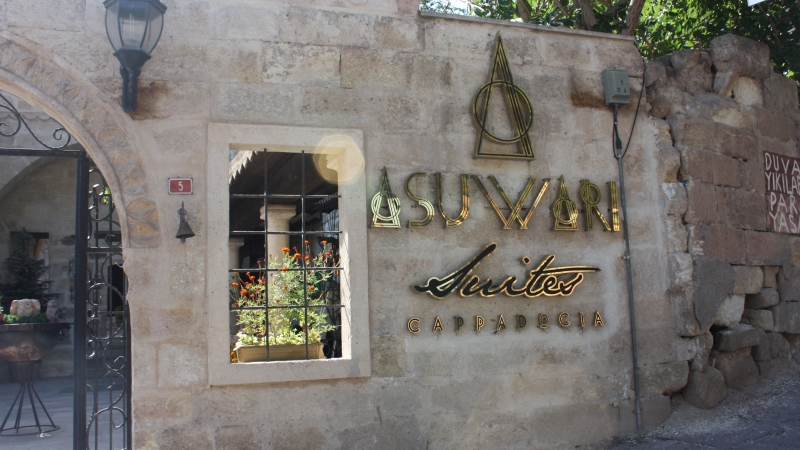

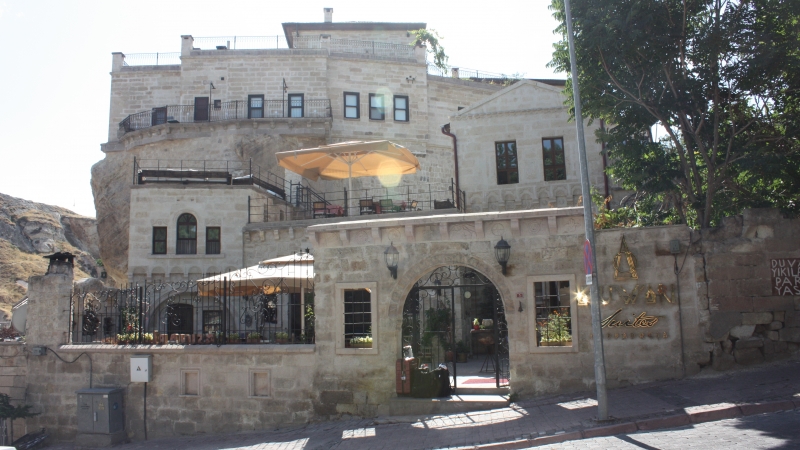
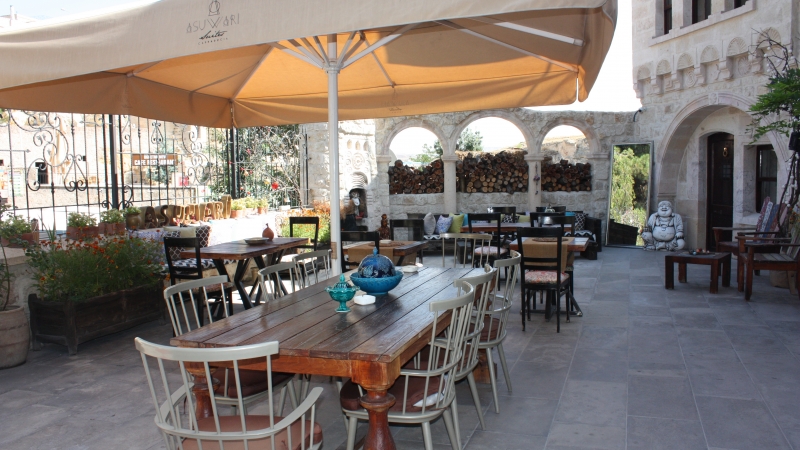

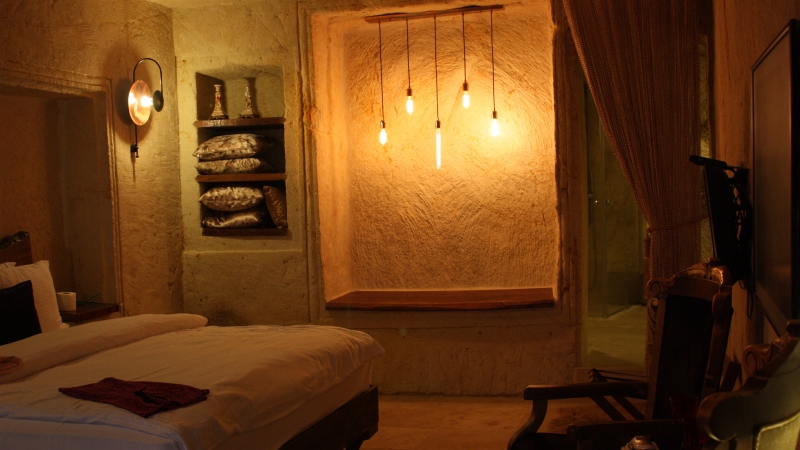


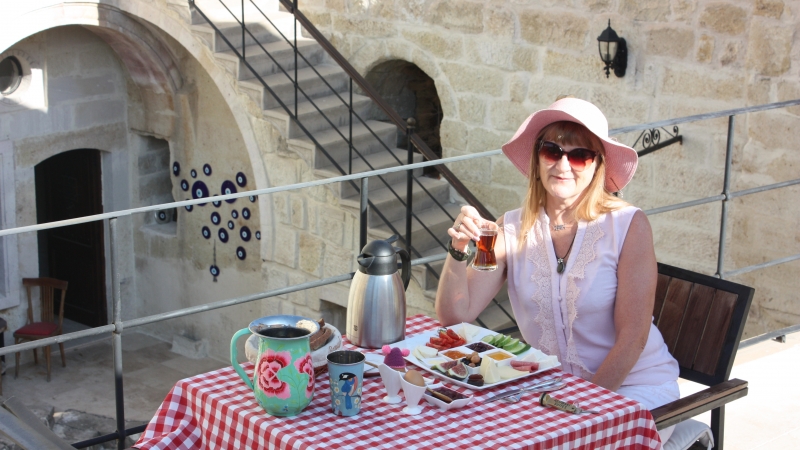

The first day I spent taking many photos of the caves and other sights of interest in Ürgüp. I wandered around the town and relaxed at the Family Garden Café. It was very pleasant just sitting in the afternoon shade under the trees, relaxing, drinking Turkish çay and enjoying the ‘music’ from the waterfall (which was the centre piece of the garden), while watching the children play. In the evening I ate at a local Turkish restaurant and afterwards I went to discuss my options for tours on visiting the most popular tourist attractions in the Cappadocia district. I booked a tour (recommended by and arranged from the hotel owner) for the following day which began at 9.15am with a hotel pick-up and lunch included.




So, the following morning I took breakfast at 8am and was ready for my pick-up at 9.15am. Sun cream, sun hat, water, money, camera, phone, all at hand. The first stop at Esentepe had an amazing panoramic view. In fact, it was an awesome sight and somewhere I could have sat all day just gazing at its history, imagining how life here may have been hundreds of years ago. Our tour guide first explained the history at each stop before we took our photos. Needless to say, I took many photos here during the 45 minutes stop before we moved on. Our next stop was Göreme Open Air Museum where we were able to see inside the finest of the rock-cut churches, with beautiful frescoes (wall paintings) whose colours still retain all their original freshness. It resembles a vast monastic complex composed of scores of refectory monasteries situated side-by-side, each with its own fantastic church. The Göreme Open Air Museum has been a member of the UNESCO World Heritage List since 1984 and was one of the first UNESCO sites in Turkey. Most of the churches in Göreme Open Air Museum belong to the 10th, 11th and 12th centuries, and in my opinion, this is the first sight to be visited by all travellers visiting Cappadocia.


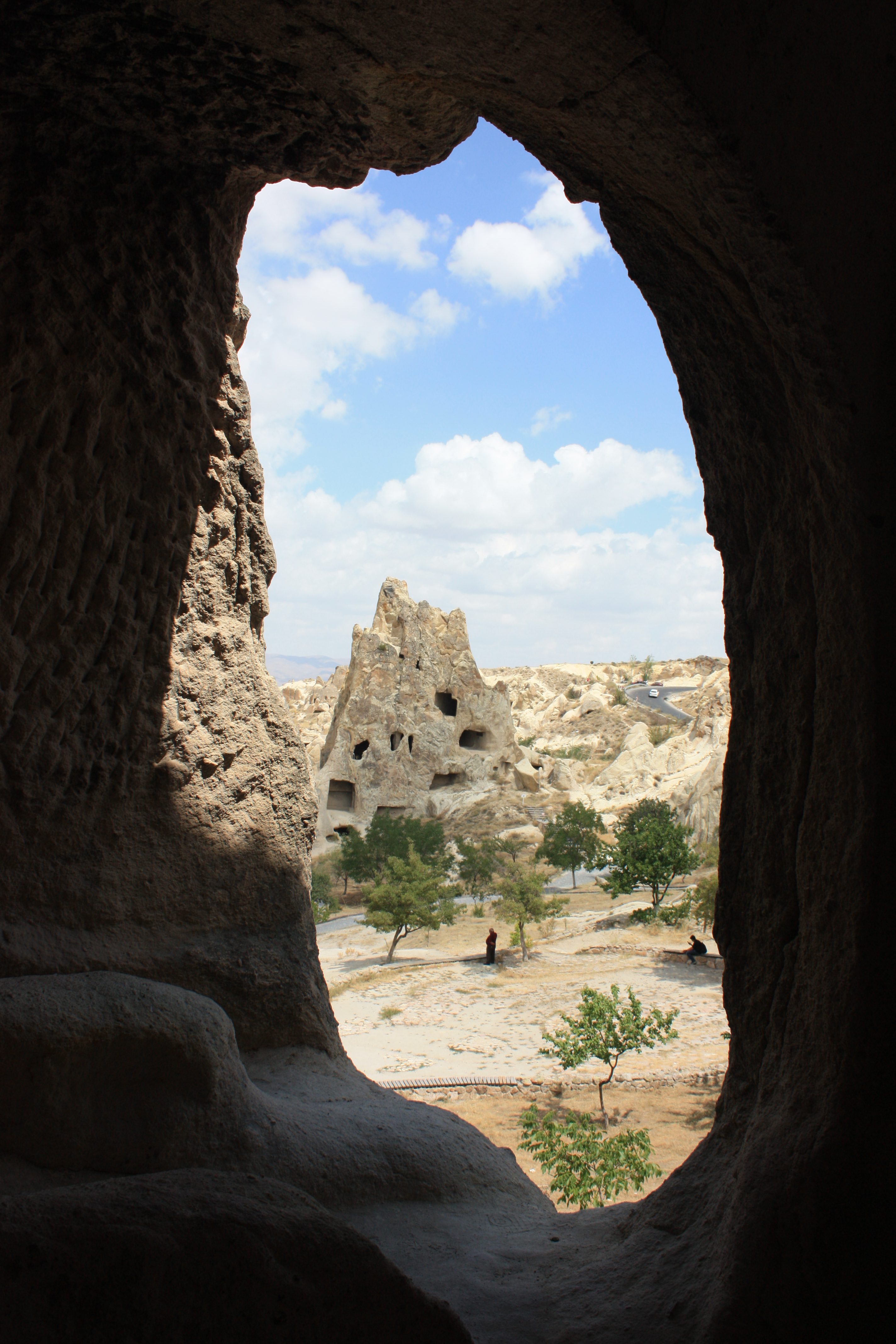

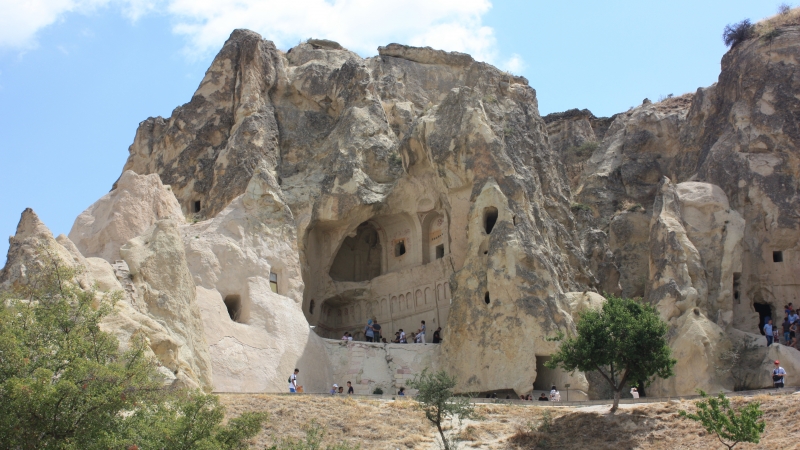
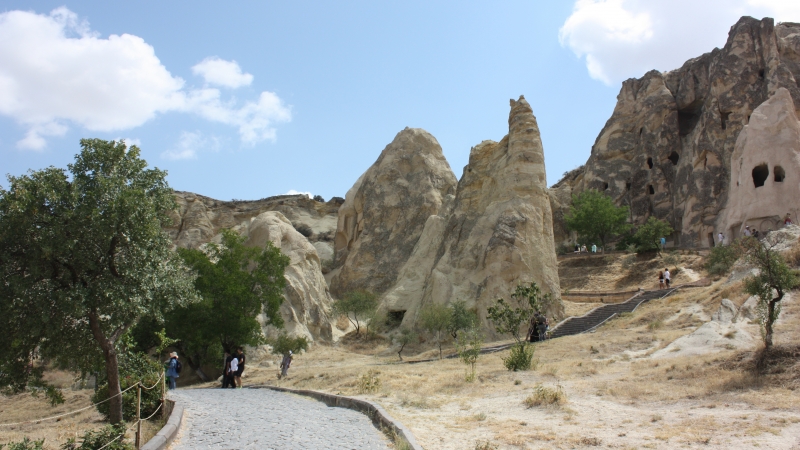


The Fairy Chimneys – Paşabağ (The Valley of the Monks)
Previously before tourism began, people called the strange rock cones that surrounded them ‘kales’ (castles). Nowadays, these amazing structures are usually called ‘peribacaları’ or ‘fairy chimneys.’ They appear in an extraordinary range of shapes and sizes, but most are tall and phallic-shaped with a cap of harder, darker stone that protects the softer rock underneath from erosion. These caps fall off eventually, whereupon the wind and rain start to whittle away the cone until eventually it also, collapses.
The next place to visit was Paşabağ (The Valley of the Monks) where the delightful mushroom shaped ‘fairy chimneys’ can be seen. Paşabağ actually means “Pasha’s Vineyard,” which name it received after the Byzantine Greek population left the region which is located in the middle of a vineyard. You can see the most amazing fairy chimneys at Paşabağ with twin and even triple rock caps, and like the cave hotels in modern day Cappadocia, the fairy chimneys of Paşabağ harbour a number of cave dwellings as well as chapels once used by Christian hermits, the most prominent of which is a tri-level chapel dedicated to St. Simeon and a hermit’s shelter, built into one of the fairy chimneys with three conical heads. It was almost as if I was on another planet taking in these amazing views.
If you like camels and horses, you can also take rides around the fairy chimneys (especially if your legs are weary or it’s too hot to walk around) at a reasonable price or simply sit with a drink at the café and enjoy the view from there.

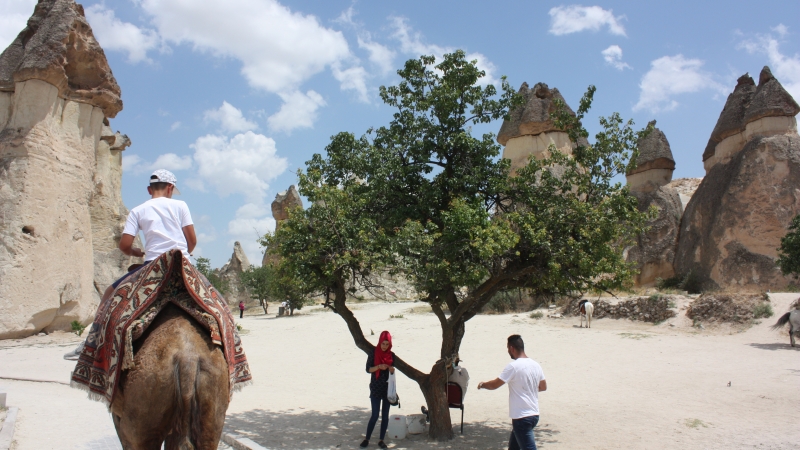

Next was our visit to Avalon where we had lunch in a Traditional Turkish restaurant before moving on to Avalon’s Pottery Centre. The town of Avanos is set on the banks of the Kizilirmak (red river). It is the longest river in Turkey and it doesn’t only separate the town from other parts of Cappadocia, but also supplies the clay for pottery. It is by this river that the red pottery clay is found and from which Avanos derives its main livelihood and its foremost claim to fame. Pottery has been produced in the Avanos district for centuries and some of the techniques still used date back to Hittite times to 2000 BC. So, you can see why Avanos is a mass of family run potteries! These famous potters make wonderful souvenirs from simple ashtrays and mugs to ornate plates, vases and chess sets.
Here, at the back of the pottery shop in the workhouse, we were served fruit tea while watching a vase being made. Then, whoever was brave enough to try and make their own vase was welcome to sit and ‘have a go.’ Only one man was brave enough to try his hand at making a vase and it was a pretty decent outcome at the end of it. I think he was impressed at his efforts too. We all took last 20 minutes to look around the shop at the artistic delights before moving on to our last stop of the day.


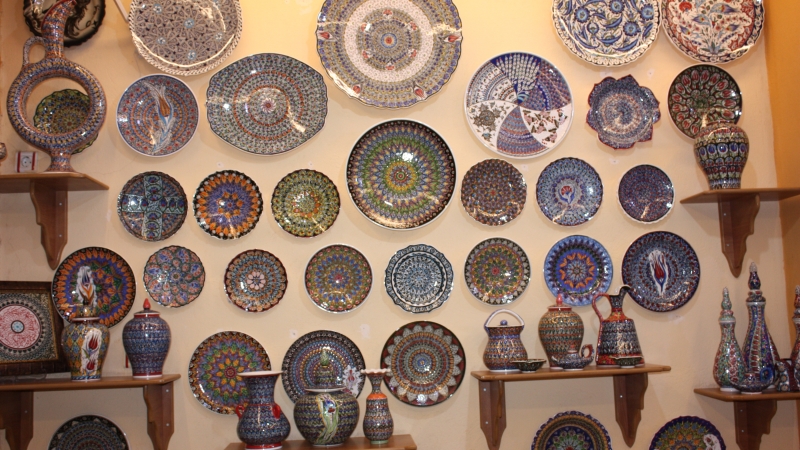
Our last stop was a short drive from Avalon. A place called Devrent Valley or otherwise known as Imaginary Valley or Pink Valley. There are no cave churches like the other valleys of Cappadocia neither does it have Roman castles or tombs in Devrent Valley, as it appears it was never actually inhabited. But, what makes it famous is the Lunar Landscape. The small fairy chimneys in the valley form a lunar landscape, or some would say, moonscape, due to their strange look. The valley also has many animal shaped rocks. You could say it looks like a sculptured zoo made by nature. Some of the animal shapes easiest to notice are camel, snake, seals and dolphin. And if you let your imagination run free you will find many others. There is even a rock pillar which looks like virgin Mary, holding Jesus Christ.
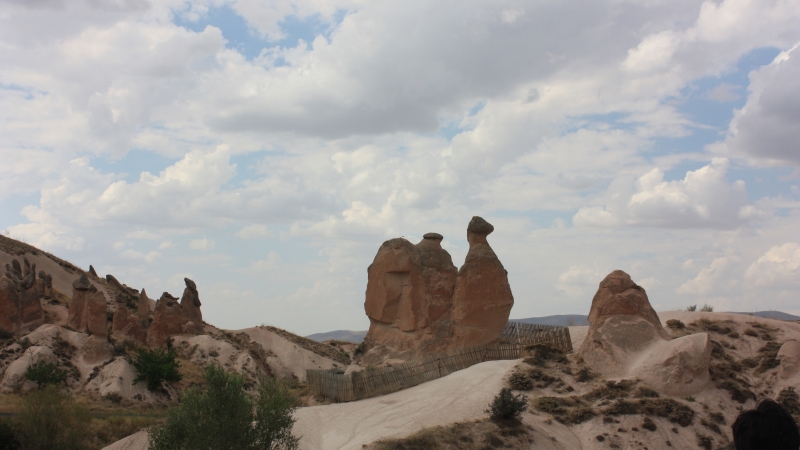
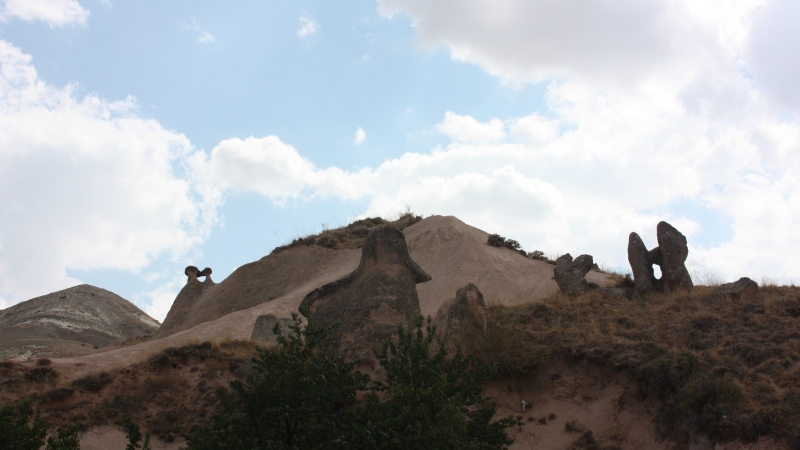
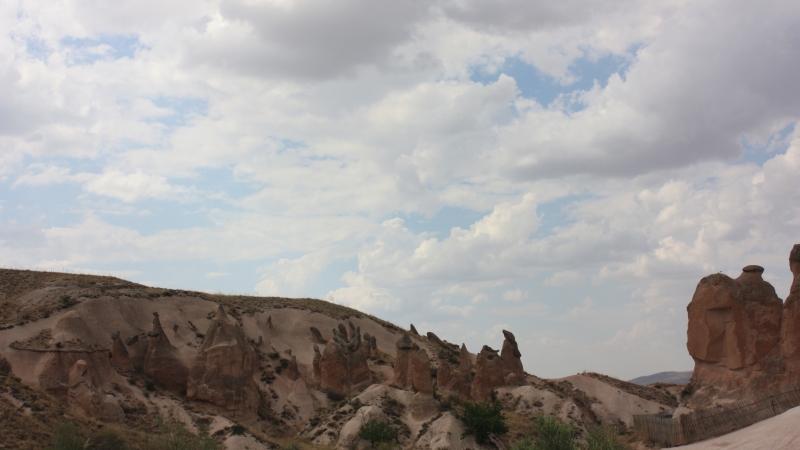
Hot Air Balloon Rides are always at dawn in Göreme but only if the breeze is slight. This is usually the best time for gentle breeze as more often than not the breeze will be too strong for flights later in the day. If the forecast is announced as too breezy and thought to be detrimental to balloon fights, the rides will of course be postponed until the next best day. The cost of taking a ride in the balloon was far more than I expected though, I have always wanted to try a balloon flight but, on this visit, I decided to watch the balloons prepare for flight and take videos and photos from the ground. And, instead of paying for a tour company to take me to the balloon take-off sight, the hotel owner arranged for a taxi to pick me up and take me to the place in Göreme where it all starts just before the dawn breaks at 5.30am.
The day is Saturday, 4th August 2018. I was woken by my alarm at 04.30am. I immediately got up and prepared myself for the taxi pick-up at 04.50. I was so excited, even though I knew I wasn’t going to be floating above these spectacular surrealistic landscapes. I was excited enough just knowing I was going to be there experiencing it and capturing awesome photos and videos for wonderful memories of my trip to Cappadocia. The taxi arrived on time and we drove, still in the darkness, to Göreme where, when we arrived, they had already begun to fill the balloons with hot air from the fires.


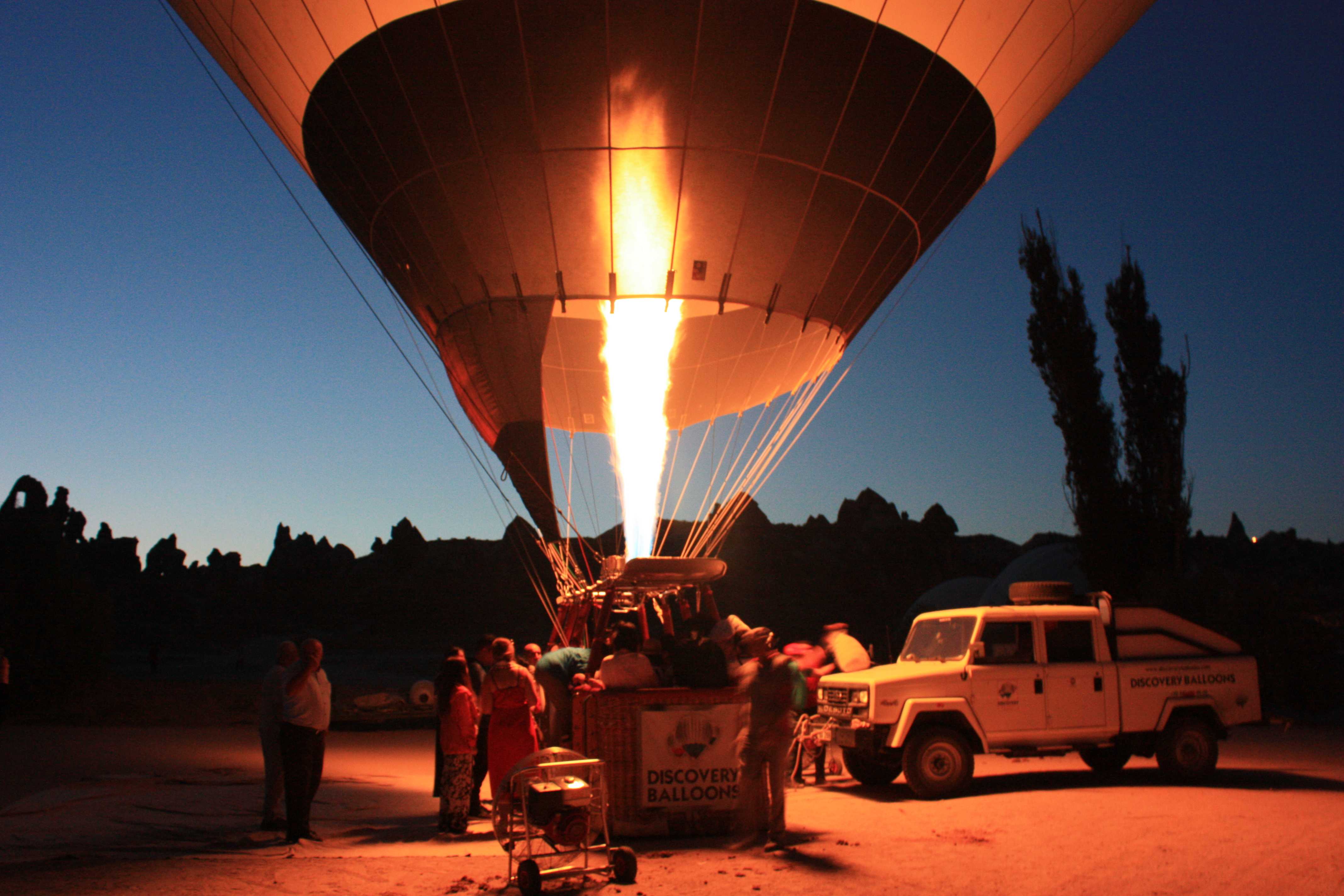
It was pretty cold actually at that time in the morning but standing close to so many balloons warmed me up nicely and only from the fires light could I see anything. I took numerous photos and videos and once some balloons started to ascend the taxi driver drove me to an area close by but high up on a plateau where the balloons would soon all glide by. An excellent place to shoot film and photos in this amazing ‘fairy-tale’ scene. By this time the view from the sunrise alone was striking but, with so many balloons filling the sky also I can honestly say it was absolutely breathtaking. These spectacular landscapes combined with excellent flying conditions allow the balloons to gently drift over and between fairy chimneys, pigeon houses hewn into the unique rock formations, orchards and vineyards and then float up over rippled ravines for breathtaking views over the region before their gentle descend.

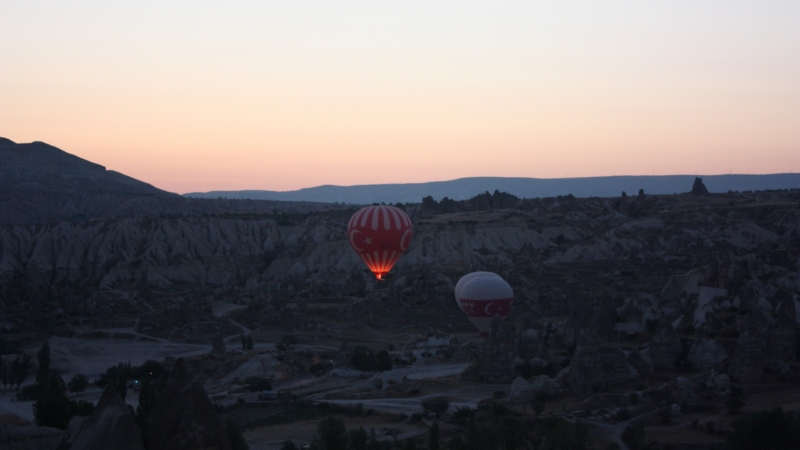

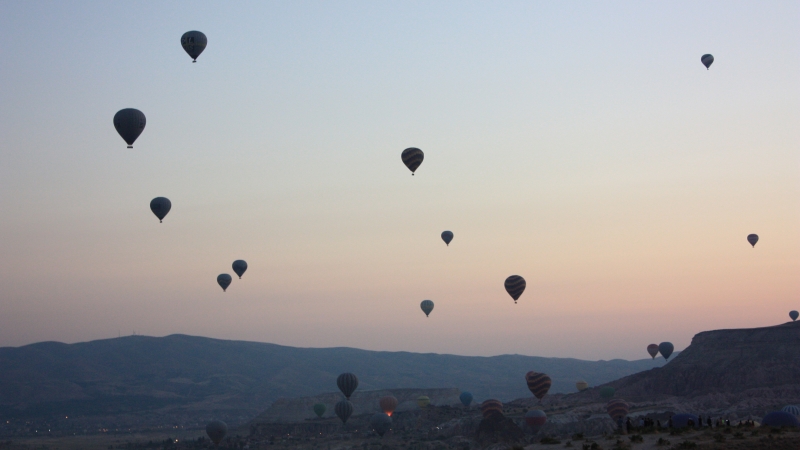


The Standard Balloon Flights are air-borne for about an hour and take a maximum of 20 people at one time. The Deluxe Flights for one and a half hours and take between 6 and 12 people at one time. I’ve heard that even though they fly low for a while, they can sometimes pick fruit from the trees as the slowly glide along. They always go up to 500 metres high and when the wind is calm, they can go higher than 1,000 metres. I wonder if you have ever though about flying in a hot air balloon?
I can honestly say that this was the best holiday I have had for a long time and I learned so much about the history of Cappadocia and the surrounding areas. I had never before taken the time to research this beautiful historic place that is so rich in history and I actually feel a little ashamed to say it. But, because of how I felt during my stay, and what I now know about the origin of Cappadocia, I know I will definitely be visiting again. Cappadocia can now be ticked off my ‘Bucket List’ of places to see.




